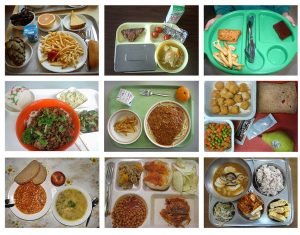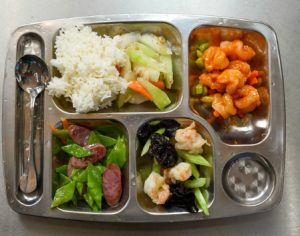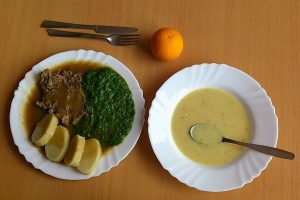
August is “Kids Eat Right” month, promoting the nutrition and health of our children. We discuss very important information regarding our children’s diets, eating behaviors, the quality of foods in school, and helpful hints for nourishing children to grow into strong and productive adults. We promote techniques to get our children more involved in meal prep, to implement kid-friendly healthy recipes, and to encourage physical activity.
These are very important topics and strategies for ensuring a bright future for our little ones. But, what if we traveled outside of the United States to take a peek at the diets and nutritional status of our children in the global community?
First, a quick fact check of children’s nutrition around the world:
• In 2015, the United Nations, along with partnering organizations announced the “Decade of Action on Nutrition: 2016-2025.” This movement was encouraged by:
• 159 million children around the world who suffer from stunting (low height for age due to chronic malnutrition, beginning in utero and continuing especially in the first 2 years of life).
• The highest rates of stunted children are found in Asia and Africa. The highest number of stunted children is found in India.
• And, the 41 million children (about 6%) under five children who are classified as overweight in 2015.
• Almost half of all overweight children under 5 lived in Asia and one quarter lived in Africa.
• These statistics highlight the “double burden” of malnutrition and obesity, highlighting both quantity and quality of diet play a large role in health outcomes.
• Socioeconomic status, parental education level, and access to food/natural disasters all influence the food security, and thus, the nutritional health of children around the world.
Nutritional Status of children under 5 and Typical Lunches from select countries around the world:
1) Cambodia (2014)
a. Nutritional Status of children: 33% stunted; b. Typical Lunch: Soup, Fish, Vegetable Stew
2)China (2010)
 a. Nutritional Status of children: 9.4% stunted; 6.6% overweight
a. Nutritional Status of children: 9.4% stunted; 6.6% overweightb. Typical Lunch (northwest): Corn and Potatoes or rice and veggies
3) India (2014)

a. Nutritional Status of Children: 38.4% stunted; 2% overweight
b. Typical lunch: Flat bread, butter, yogurt, vegetables
4) Malawi (2012)
a. Nutritional Status: 47.8% stunted; 5% overweight
b. Typical Lunch: Corn patty (nsima), beans with tomato or greens relish
5) Czech Republic (2014)

a. Nutritional Status: 2.6% stunted; 4.4 % overweight
b. Typical Lunch: Vegetable soup with egg; garlic beef, spinach and potato dumplings
6) Bosnia (2012)
a. Nutritional Status: 12% stunted (2006); 17.4% overweight
b. Typical Lunch: 3-4 course meal: salad, fresh bread and cheese, protein and vegetables
7) Peru (2012)
a. Nutritional Status: 18% stunted (2012), 7% overweight
b. Typical Lunch (central): corn/quinoa, meat
8 ) Dominican Republic (2014)

a. Nutritional Status: 7% stunted; 8% overweight
b. Typical Lunch: Rice, beans, meat
9) Kenya (2014)
a. Nutritional Status: 26% stunted; 4% overweight
b. Typical Lunch: Corn patty (ugali), vegetable relish, sometimes meat
10) United States (2014)
a. Nutritional Status: 2.1% stunted; 9% overweight
b. Typical Lunch: Protein, starch, vegetable, milk
This brief analysis is not meant to define one type of lunch that is best for all children. It is actually to celebrate the cultural diversity of our world and inspire our professionals with flavors from around the world. It’s also meant to help readers consider barriers and successes other countries have that play a role in their children’s health. It displays creative flavors, foods, and strategies to help kids eat right- everywhere!
For more information about how school meals around the world are making sure Kids Eat Right, and including local foods, check out the World Food Program’s Homegrown School Meals Program.
Or, check out A Review of Nutritional Guidelines and Menu Compositions for School Feeding Programs in 12 Countries.
Finally, a fun visual for viewing other diets around the globe can be seen on the TIME’s Issue of “What the World Eats.”
Sources:
International Food Policy Research Institute “The Global Nutrition Report.” Washington D.C: 2016. https://data.unicef.org/wp-content/uploads/2016/06/130565-1.pdf
The World Bank. Global Database on Child Growth and Malnutrition. 2017. https://data.unicef.org/topic/nutrition/malnutrition/
Global Citizen. “What Kids in 14 Countries Eat for Lunch.” World Vision. Aug 16, 2016. https://www.globalcitizen.org/en/content/kids-in-14-countries-describe-their-midday-meal/
The Food Network Canada. What Kids Around the World Eat For Lunch. http://www.foodnetwork.ca/global-eats/photos/kids-school-lunch-around-the-world/#!french-e1424722960547
